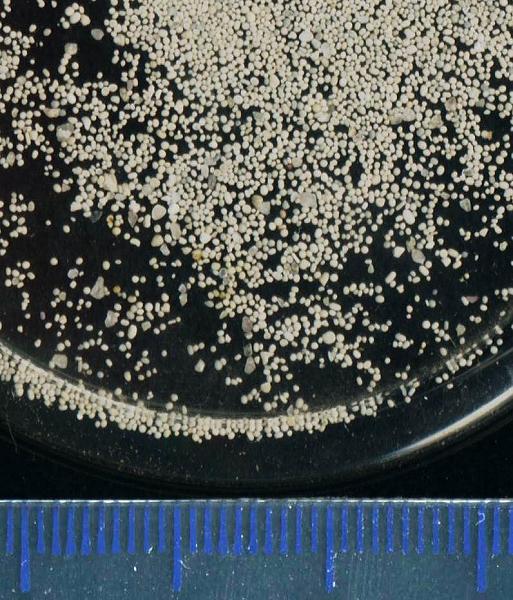
Beach sediment from southern
Great Salt Lake. Scale in mm.
 |
||
|
Beach sediment from southern
Great Salt Lake. Scale in mm.
|
Look closely at the large image of the sediment. You should be able to distinguish two types of sand, each with a distinct size and grain shape. Describe the grain size and grain shape of each, then check your answers below. Further information on these and other sediment properties.
Identify the predominant
grain size(s) in the finer sand size of the sample:
|
Now identify the dominant
grain shape(s) in the smaller size fraction:
|
| How would you describe
the rounding of this sample (more than one answer may be correct)?
|
We shall look more closely at the nature and origin of these grains in later images. |
Identify the predominant
grain size(s) in the coarser size fraction:
|
Now identify the dominant grain shape(s)
in the coarser size
fraction: |
|
What are these coarser grains likely to be?
|
Page © ; last updated 20 August, 2002